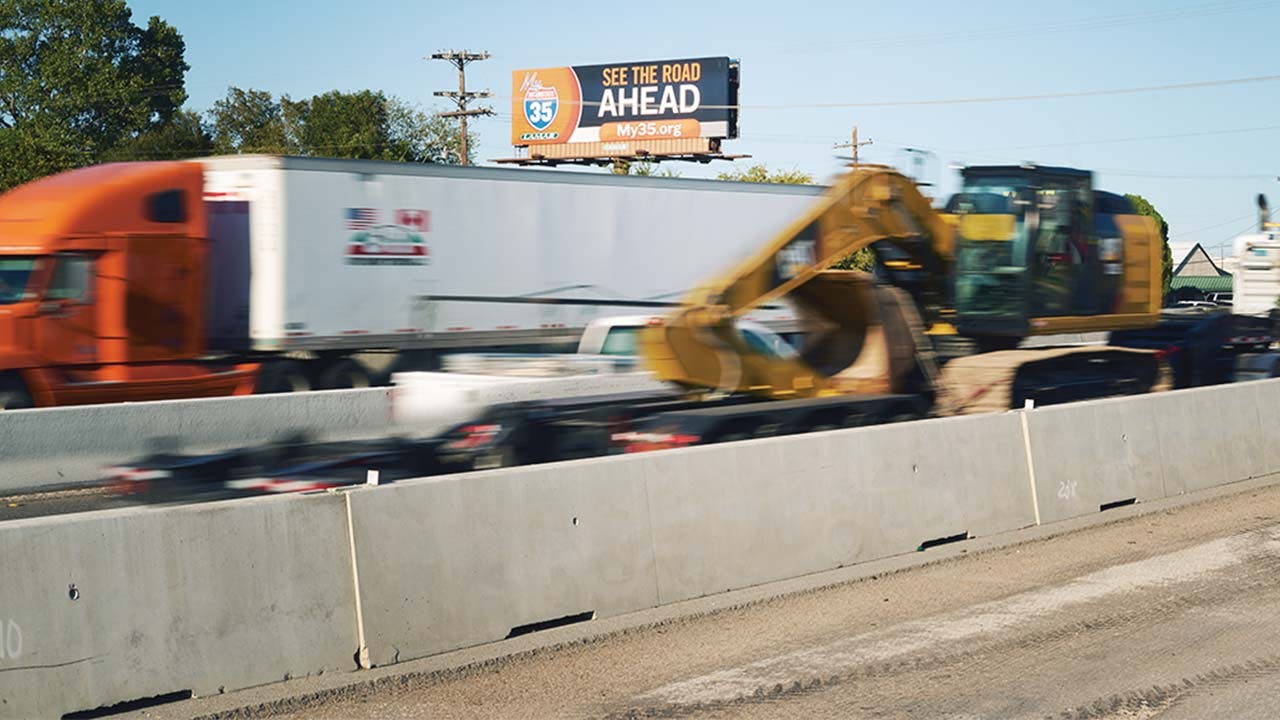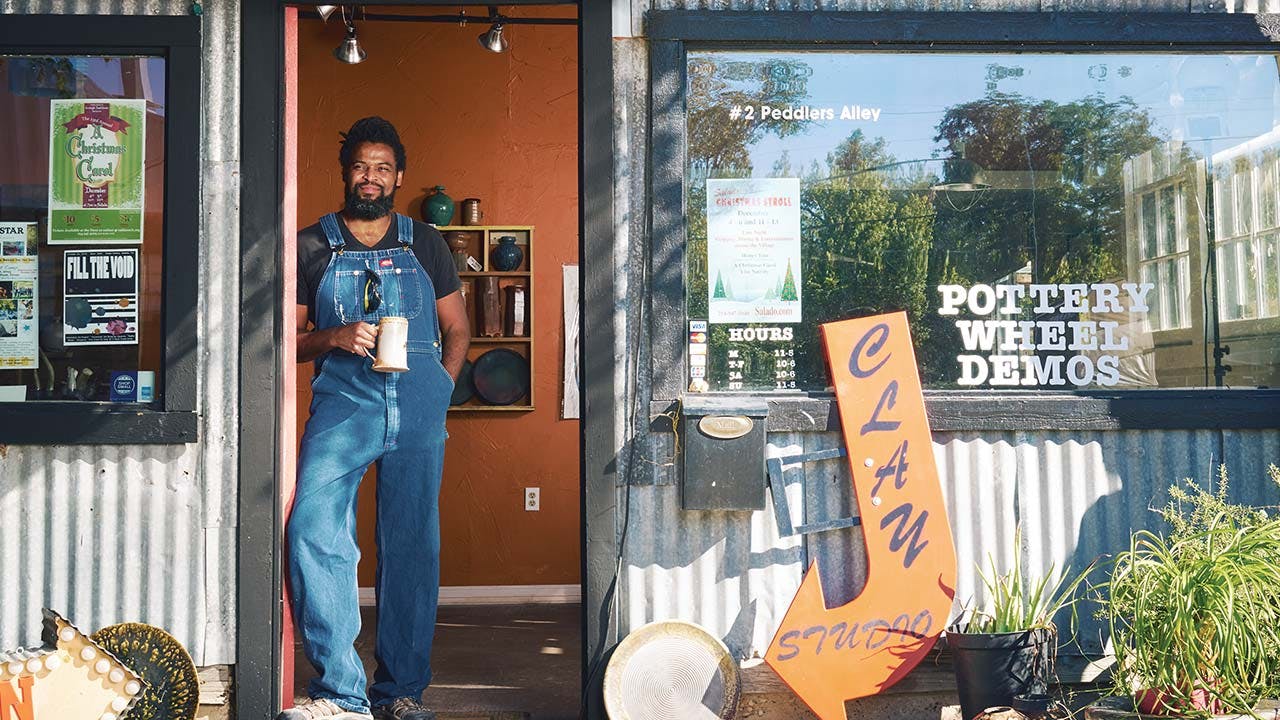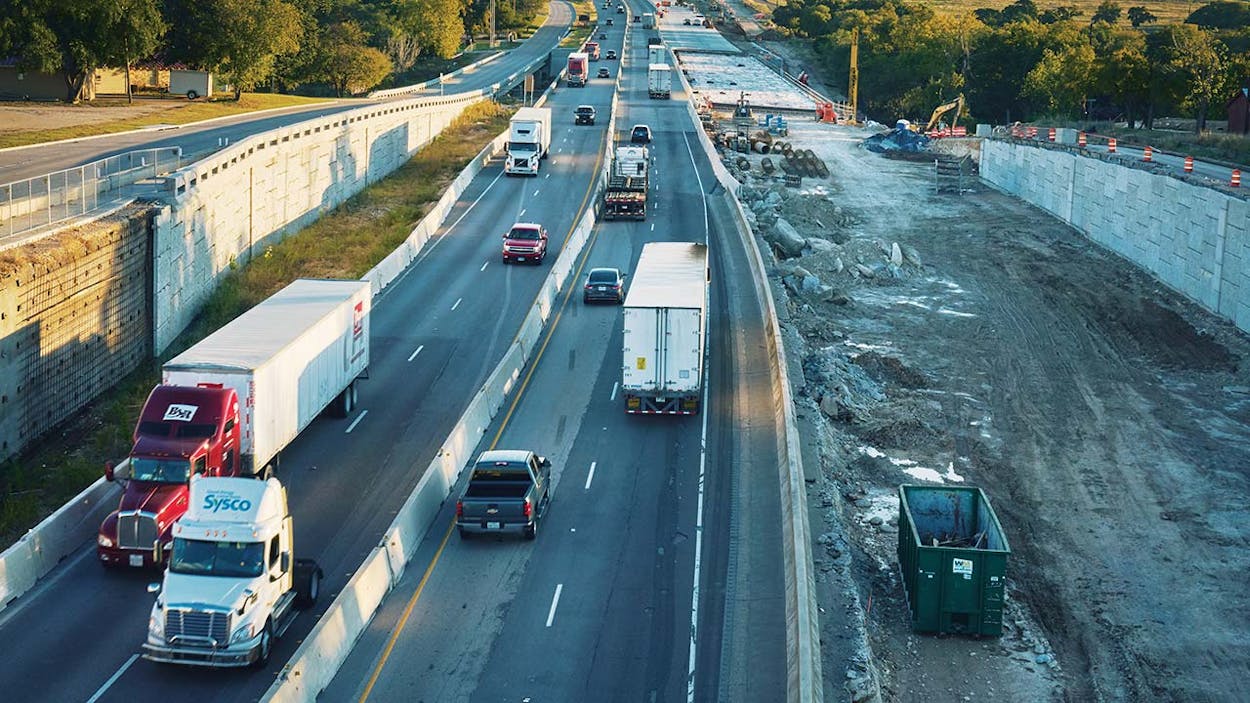Salado is a town built in the shadow of a ruin, the limestone skeleton of Salado College. Founded in 1860, the school, which sits on a hill in the old part of town, hosted its last class in 1924, having acquired an unfortunate habit of burning repeatedly to the ground under suspicious circumstances. Across the street from College Hill is the Stagecoach Inn, the state’s oldest hotel. It’s closed now, for renovations. Stray cats loiter by the hotel’s front buildings; deer feast unmolested by the shuffleboard courts.
Down the road, on an unpaved street labeled Peddler’s Alley, sits the Ro Shaw Clay Studio. “The summer’s been dead here,” says proprietor Ro Shaw, leaning by a potter’s wheel near shelves of freshly thrown vases, bowls, and cups. “Usually we get a little bit of traffic in the summer. The busiest season is between now and Christmas, and this year it’s still kinda dead.”
Shaw opened his pottery business last year, next to the better-established Salado Glassworks, to help restart the village’s dormant art scene, which had given way to the boutique trade in recent decades. But his plans, and those of other local merchants, soon hit a pothole, thanks to the Texas Department of Transportation’s massive, years-long, multibillion-dollar expansion and renovation of Interstate 35. A stretch of the highway that once beckoned travelers into the artsy town is now a blasted-out construction zone that scares off many. Shaw, like a lot of people in the village, is counting down the days until the work crews pack up and shoppers, hopefully, return.
Salado’s economy has always depended on trade and travel. It developed as a stop on stagecoach lines and the Chisholm Trail. But when the region’s railroads bypassed the city, the town went into decline. It was rescued by I-35; for decades local merchants counted on a modest number of passers-through pulling off the interstate and exploring the town. People would stop by to shop and walk around the old village and Salado Creek.
“Back in the eighties, the village was more vibrant. There were more shops, more art galleries, more antiques stores,” says Salado mayor pro tem Fred Brown. The village called itself the “jewel in the crown of Texas.” Salado lost a little excitement in the nineties, he says, “but things really changed in the last several years, in particular because of the construction on I-35.”
In 2012 TxDOT began work on Project 1B, a small part of the expansion undertaken by the department’s Waco District, which oversees an eight-county section of I-35 between Austin and the Metroplex. Project 1B, which runs just 3.4 miles, is expanding the interstate from two lanes on each side to three and modifying frontage roads and overpasses. With an initial price tag of some $72 million, 1B was supposed to be finished in August. The James Construction Group, the contractor handling the project, now says it’s aiming for next May, though even that might be overly optimistic. According to the department’s metrics, as of October only 62 percent of Project 1B had been completed.
The project has had a remarkably disruptive effect in the village. In February, Salado’s mayor, Skip Blancett, told TxDOT representatives that 82 of Salado’s 127 businesses had closed over the past three years. The closures have had a cascading effect: with fewer places open, there’s less reason for drivers to pull off the highway, and each subsequent reduction in foot traffic has hurt businesses more.
The situation has only gotten worse over the past year or so, as work has shifted from upgrading the frontage roads to constructing new highway lanes. In October, as the wrap date for 1B was pushed back, Blancett wrote an angry open letter to James Construction. Residents of Salado, Blancett wrote, were “emotionally and mentally exhausted,” and the town’s remaining business owners were spending “their last pennies trying to stay in business.”
“They made a lot of promises,” says Salado alderman Amber Dankert. “When you’re a small town, you have small-town values, you trust what people tell you. And it hurts when they don’t keep those promises.
“I was in high school here when they started talking about the highway expansion,” she adds. “My son will be in high school by the time they’re done.”

Egypt has the Nile, Russia has the Volga, and America has the Mississippi. Texas has I-35. Nearly half the state’s residents live along the interstate, and it plays an integral part in our commerce and culture: for commuters, for football fans trekking to the Red River Showdown, for regional tourists going to Fiesta San Antonio or Fort Worth’s museums. Yet it’s disliked by many of the people who depend on it, because they associate it with congestion and, sometimes, danger.
Construction of the interstate began in the fifties, when the Eisenhower administration took it upon itself to knit the country together with wide, open highways. I-35 knit together Texas too, linking a few of the state’s disparate regions. Decades ago, San Antonio and Dallas seemed as if they existed in different worlds; today, they feel like neighborhoods in a statewide city.
When the interstate was conceived, there was comparatively little traffic in the Waco District’s region, so TxDOT built much of that stretch of highway to a scale apt for a rural area. Between Williamson County, just north of Austin, and Hillsboro, where the interstate splits in two to accommodate drivers heading for Dallas or Fort Worth, drivers made do with two lanes in each direction.
But as Texas’s population and economy grew, and especially after the North American Free Trade Agreement went into effect, in 1994, the area became a nearly hundred-mile-long bottleneck. “It was never designed to carry the kind of traffic load that it’s got now,” says Jodi Wheatley, a public information officer with the Waco District. “Nobody imagined this in the fifties.”
Though Texans often think of I-35 as an artery connecting the state’s big cities, it’s also a conduit of global commerce thanks to its vast reach. In the north, it ends 100 miles shy of Canada; in the south, it stops just short of Mexico. Freight is believed to constitute approximately a quarter of the interstate’s daytime traffic burden, and the road’s 588-mile stretch through Texas is central to that activity. Laredo, the southern terminus of I-35, is the largest inland port in America. Its sister city, Nuevo Laredo, is the largest in Latin America.
Many of the trucks that collect northern-bound loads in Laredo pass through Texas without ever leaving the interstate. Not only is there not enough capacity to hold all of them, but much of the pavement wasn’t built to the construction standards that modern freight traffic requires. And many segments, Wheatley says, are nearing the end of their intended lifespan.
So in 2011 TxDOT began the second-biggest infrastructure project in the agency’s history, eliminating the bottleneck between Austin and Hillsboro. (The first, of course, was the construction of the Texas expanse of I-35 itself.) Apart from building out three full lanes in each direction, TxDOT is upgrading much of the interstate’s other infrastructure—access roads, overpasses, and some 180 bridges.
The project, which won’t be finished until 2018 at the earliest, had an initial cost estimate of $2.5 billion. One eight-mile stretch through Waco alone is anticipated to consume an additional $380 million, a figure so daunting it has yet to be funded.
All of this is going on while the highway is kept open, a monumental feat. TxDOT thought it would be better to concentrate the suffering rather than draw it out needlessly, says Waco District chief engineer Bobby Littlefield. “Instead of stretching these projects out for twenty years, we thought, let’s get it done within ten years. And I think we’re going to be able to do that.”
But in the meantime, driving on I-35 in Central Texas has become a dicey proposition. Traffic in many of the construction zones is often hemmed in by concrete barriers, creating a canyon of sorts where freight traffic hurtles by like a projectile passing through the barrel of a gun.
Inside the Bell County Safety Rest Area, on the northbound side of I-35 just south of Salado, TxDOT has posted a warning, black text on a field of traffic-pylon orange. “One day you’re going to love I-35,” the sign says. “Until then, be careful.”

For the major cities along I-35, the interstate’s expansion means minor, temporary pain and future reward. But for the smaller towns in between, the pain is more acutely felt. When the construction crews come to town, it’s a little like hosting an occupying army. Freedom of movement is restricted. The plans of the crews will remain unknowable to those affected, and they will most likely stay longer than they initially pledge.
Naomi Murphy, a military contractor from Temple, commutes frequently to Salado for classes at Ro Shaw’s pottery studio. “Just getting into Salado has been challenging,” she says. “I come in three times a week, at night, and every time there’s some new route to go.” Shaw often drives in the other direction, to Austin, to pick up supplies for his business. He complains of lane shutdowns and detours that pop up with little notice, and the ad hoc road network around town feels dangerous and difficult to navigate at night. “Periodically they close the northbound highway, and all the traffic is routed on that tiny service road,” he says. “When that gets backed up, trucks start to flow through Main Street, big diesel trucks and eighteen-wheelers.”
Gail Allard, who owns the Salado Glassworks, says he has prospered since he opened the business, four years ago. “In 2013 we had a phenomenal summer,” he says. Business was so good that he built a new facility and store on his property. This past summer, though, business dropped dramatically. He’s hoping things will pick up during the holiday season. “If I had to rely on the traffic coming into town right now, we’d be dead,” he says. He’s skeptical of James Construction’s claim that the work will be wrapped up by next May. “I don’t really have any belief in the date they give,” Allard says, though he certainly hopes they’re right. Another summer like 2015, he says, and he’ll have to consider cutting staff—or taking more-drastic measures.
TxDOT’s Wheatley concedes that “we haven’t been happy with the progress” of projects in Salado and the rest of Bell County. But she also emphasizes the enormous complexity of the work. In order to keep the interstate partially open at all times, contractors have to essentially shift it over piece by piece: build a new frontage road, then destroy the old one, then build new highway lanes, then destroy the old ones, all within tight spaces and with a variety of local restrictions.
Wheatley’s job is to engage with unhappy residents and travelers, and she takes pride in the department’s work. TxDOT, she says, has strived to solicit input from nearby towns and encourage them to put a local stamp on the expansion projects. In West, just south of Hillsboro, TxDOT worked with local residents to add murals to the sides of the segment of the interstate that passes through town. Portraits of Czech dancers and polka musicians now adorn retaining walls that separate the highway from the famed kolache merchant Czech Stop.
The silhouettes in the murals represent real people in the community, some of them survivors of the 2013 fertilizer depot explosion. One man, an accordion player named Charlie Ferguson, died of cancer shortly before the mural’s ribbon-cutting ceremony. As she relates his story, Wheatley finds herself getting choked up. “Here I am, getting emotional about a highway,” she says. But, of course, it’s not just a highway. “I don’t know where Texas would be without that road.”









